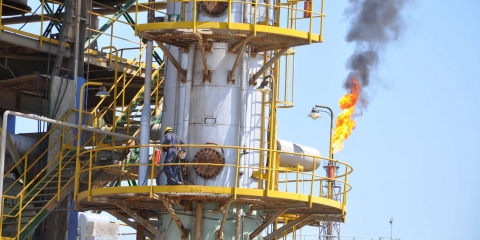How ISIS Still Threatens Iraq
Each day, villagers in the hamlet of Abu Teban fear the arrival of darkness. “At night, they attack us,” said Dakhyl Ibrahim Ramayed, a local leader, referring to the return of the Islamic State to this desert region of Anbar province. He pointed to the arid land bordering the small clump of homes that make […]Pesha Magid writes for Foreign Policy:
Each day, villagers in the hamlet of Abu Teban fear the arrival of darkness.
“At night, they attack us,” said Dakhyl Ibrahim Ramayed, a local leader, referring to the return of the Islamic State to this desert region of Anbar province. He pointed to the arid land bordering the small clump of homes that make up the village and a nearby blown-up house. “Daesh”—the Arabic pejorative for the Islamic State—can spring out of nowhere, said Ramayed, who was imprisoned eight times under the militant group and knows its brutality first hand.
The Islamic State appears to be returning to an insurgency in Iraq—or trying to. Since the fall of Baghouz, the last Islamic State stronghold in Syria, in March, at least a thousand militants are suspected to have crossed into Iraq. Abu Bakr al-Baghdadi, the spiritual leader of the organization, was believed to be in largely Sunni-dominated Anbar when he issued his first video in five years last month. Many militants live in tunnel networks built by the Islamic State and stocked with the necessary food and clothing, and they operate in cells of five to 10 people.





